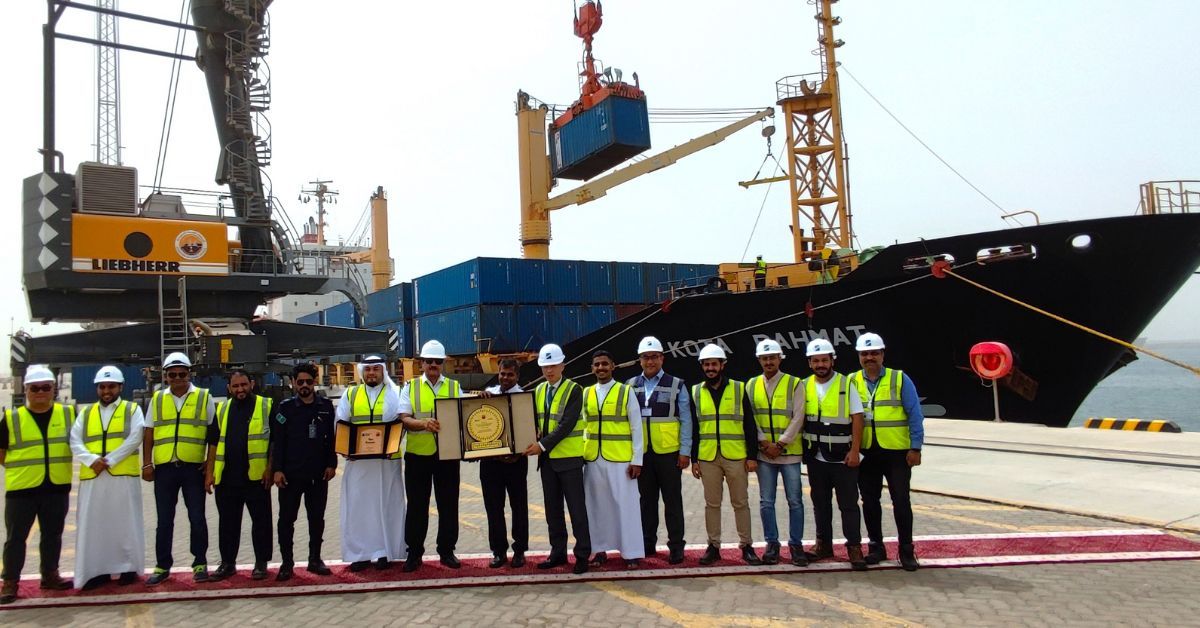Hutchison Ports Jazan and the traders in the Saudi Arabia southern region welcomed the first commercial container vessel MV. Kota Rahmat at new container terminal of JCPDI Port, Jazan, Saudi Arabia, as part of a special arrangement between Pacific International Lines (PIL), owner of Kota Rahmat, and Hutchison Ports Jazan. Kota Rahmat serves PIL’s Intra Red Sea Feeder service, which connects ports in the Red Sea region including Jeddah Port, Port Sudan, Djibouti Port, Hodeidah Port and Aden Port in Yemen.
With the patronage of Royal Commission Jazan and JCPDI Port Authority, this collaboration between PIL and Hutchison Ports Jazan for the testing of the nGen container terminal operating systems and its integration with the customs systems, shows the support and confidence of global shipping lines in the operation of the new container terminal located in the deep-sea multipurpose Port of JCPDI, Jazan (Port Code: SAJEC). This also reflects the good market potential of Jazan City for primary and downstream industries, as well as the newly launched Jazan Special Economic Zone (SEZ), including the hinterland market of Jazan, Abha, Khamis Mushait, and Najran, among others.
The JCPDI Port is located at the crossroads of one of the busiest East-West trade lanes and the rapidly growing North-South trade lanes. It is also strategically situated along China’s Belt and Road Initiative and is the Kingdom’s closest port to East Asia. The port is considered a major gateway to the Kingdom’s southern region, which has an estimated population of 4.5 million people. The terminals are expected to support the economic growth of the entire region as well as to serve Eastern and Southern Africa.
Headquartered in Singapore, PIL is ranked 12th among the world’s top container shipping lines and is also the largest home-grown carrier in Southeast Asia. From a modest shipowner, PIL has developed into a global carrier with a focus on China, Asia, Africa, Middle East, Latin America and Oceania. PIL serves customers at over 500 locations in more than 90 countries worldwide with a fleet of around 100 container vessels.







